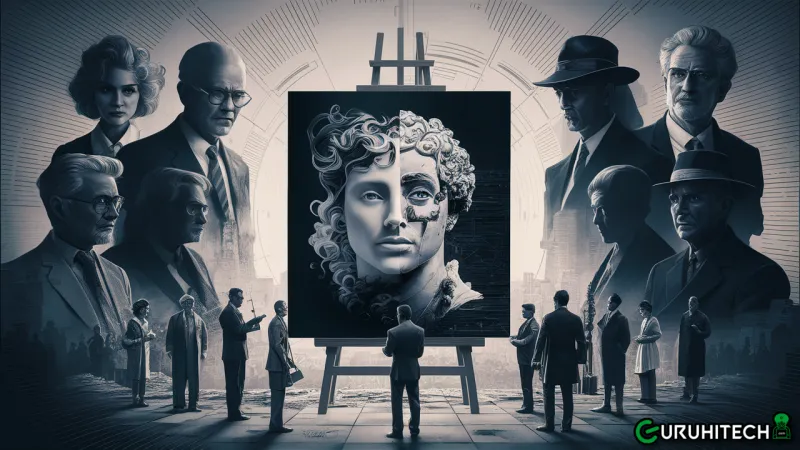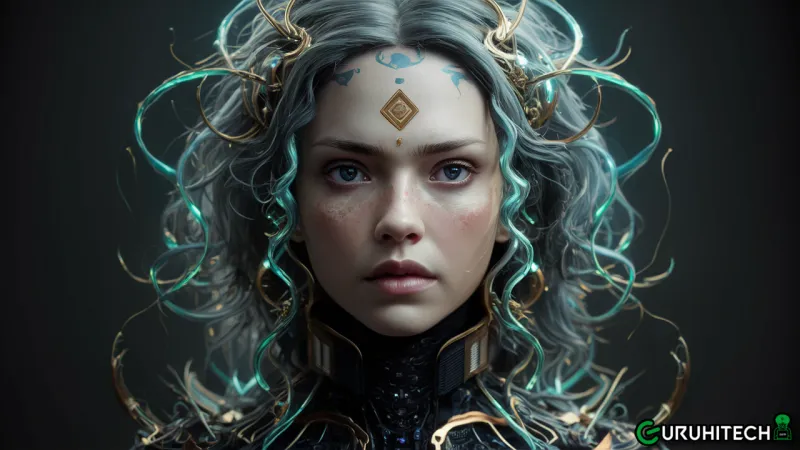The Impact of AI Art Generators on Art Collecting and Investment Practices

The art world is on the cusp of a significant transformation. The emergence of free AI art generators has democratized artistic creation, allowing anyone to produce visually stunning pieces with minimal technical expertise. While this accessibility is commendable, it begs the question: how will AI art generators impact the traditional art collecting and investment practices?
This blog delves into this very question, exploring the potential advantages and challenges posed by AI in the art market. We’ll examine how collectors and investors might need to adapt their strategies in this evolving landscape.
Unveiling the Power of AI Art Generators
Free AI art generator are software programs that utilize artificial intelligence to create original artwork. Users provide prompts, descriptions, or even reference images, and the AI generates an image based on these inputs. Some generators specialize in specific styles, like emulating Van Gogh’s brushstrokes or replicating the surrealism of Dali.
The sophistication of these tools is constantly improving. They can now produce images with remarkable detail, complex compositions, and a wide range of artistic styles. This accessibility has opened doors for a new wave of art creation, empowering individuals who might not have had the artistic skills or resources to create their own work.
A Boon for Accessibility and Exploration
One of the most significant advantages of AI art generators is their ability to democratize art creation. Anyone with an internet connection can now experiment with different artistic styles and generate unique pieces. This fosters a more inclusive art scene, allowing individuals from diverse backgrounds to express themselves creatively.
For collectors, AI art generators offer a novel way to explore different artistic styles and discover new artists. These tools can be used to generate variations on existing works, experiment with different color palettes or compositions, and even create entirely new concepts. This exploration phase can help collectors refine their taste and identify emerging trends in the art world.
Blurring the Lines: Art, Originality, and the Role of the Artist
However, the rise of AI art generators raises a fundamental question: what constitutes art in the age of AI? Traditionally, art has been valued for its originality, the unique vision and skill of the human artist. With AI generating works that mimic established styles or even produce entirely new artistic movements, the concept of authorship becomes blurred. Is the artist the one who writes the prompt, or the AI that interprets it?
This debate has significant implications for the art market. The current value system often hinges on the artist’s reputation, their place in art history, and the scarcity of their work. With AI capable of churning out an infinite number of unique pieces, the concept of scarcity becomes less relevant. Will collectors still value a piece generated by AI, even if it is demonstrably unique?

The Shifting Landscape: New Opportunities for Collectors and Investors
While some may see AI as a threat to the traditional art market, it also presents exciting new opportunities for collectors and investors. Here are some key areas of transformation:
- Emerging Art Movements: AI art generators can facilitate the exploration of entirely new artistic movements. By feeding the AI vast datasets of a particular style or theme, collectors can discover and champion nascent artistic trends before they gain mainstream recognition.
- Curated Collections: The sheer volume of AI-generated art necessitates curation. Collectors with a keen eye can assemble collections that showcase the best and most innovative works produced by AI. The value of such collections may lie not just in the individual pieces, but in the narrative they tell about the evolution of AI art.
- Investment Potential: As the technology matures and the market for AI art evolves, certain AI-generated pieces may hold significant investment potential. Early adopters who can identify and acquire works from groundbreaking AI artists or depicting unique themes could see substantial returns in the future.
Beyond Aesthetics: The Value of Human Input
It’s important to remember that AI art generators are tools, not replacements for human artists. The human element remains crucial in the creation of truly impactful AI art. The ability to curate the prompt, select the right style and settings, and refine the final output all require human judgment and artistic vision.
Here are some ways human input continues to shape the landscape of AI art:
- The Artist as Curator: Artists can leverage AI art generators as a tool to generate variations and explore different possibilities within their artistic concepts. This can lead to a more iterative and multifaceted creative process.
- The Artist as Collaborator: AI can be used as a collaborator, assisting artists in creating works that combine human and machine intelligence. This can lead to entirely new artistic forms that transcend traditional boundaries.
- The Artist as Interpreter: The true value of AI art may lie not just in the aesthetics, but also in the way it reflects and interprets the human condition. Artists can use AI to create works that explore complex emotions, social issues, and philosophical questions.
Challenges and Considerations: Navigating the Ethical Landscape
Despite their transformative potential, AI art generators and background removers are not without their challenges and ethical considerations. One pressing issue is the proliferation of counterfeit or plagiarized artworks generated by these tools. As AI algorithms become more sophisticated, distinguishing between original and derivative works becomes increasingly challenging, raising concerns about intellectual property rights and artistic integrity.
Moreover, the reliance on AI technologies raises questions about algorithmic bias and the perpetuation of existing inequalities within the art world. If left unchecked, these biases could exacerbate underrepresentation and marginalization, hindering the diversity and inclusivity of artistic expression. As such, it is imperative for developers and users alike to critically evaluate the ethical implications of AI art and strive for transparency and accountability in its creation and dissemination.
Looking Ahead: Embracing the Future of Art
In conclusion, the impact of AI art generators and background remover on art collecting and investment practices cannot be overstated. These technologies are reshaping the landscape of creativity, challenging traditional notions of authorship, and democratizing access to art. However, their widespread adoption also raises ethical concerns that must be addressed to ensure a more equitable and inclusive art ecosystem.
As we navigate the digital frontier of art, it is essential to embrace innovation while remaining vigilant of its implications. By fostering dialogue, collaboration, and ethical stewardship, we can harness the transformative power of AI to enrich the art world for generations to come. In doing so, we honor the timeless tradition of artistic expression while paving the way for new horizons in creativity and investment.
Ti potrebbe interessare:
Segui guruhitech su:
- Google News: bit.ly/gurugooglenews
- Telegram: t.me/guruhitech
- X (Twitter): x.com/guruhitech1
- Bluesky: bsky.app/profile/guruhitech.bsky.social
- GETTR: gettr.com/user/guruhitech
- Rumble: rumble.com/user/guruhitech
- VKontakte: vk.com/guruhitech
- MeWe: mewe.com/i/guruhitech
- Skype: live:.cid.d4cf3836b772da8a
- WhatsApp: bit.ly/whatsappguruhitech
Esprimi il tuo parere!
Ti è stato utile questo articolo? Lascia un commento nell’apposita sezione che trovi più in basso e se ti va, iscriviti alla newsletter.
Per qualsiasi domanda, informazione o assistenza nel mondo della tecnologia, puoi inviare una email all’indirizzo [email protected].
Scopri di più da GuruHiTech
Abbonati per ricevere gli ultimi articoli inviati alla tua e-mail.
